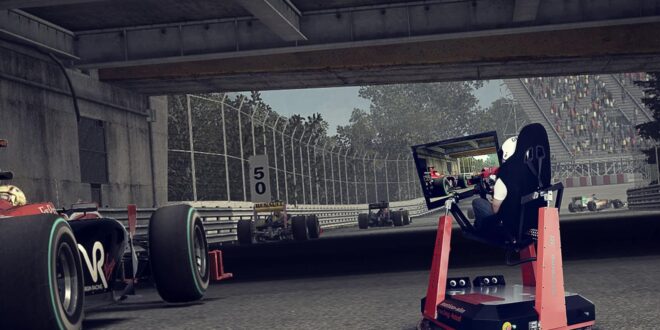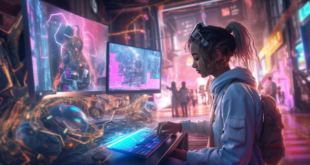Simulators have become popular among motorsport enthusiasts. Advancements in technology have created realistic experiences that get closer to what happens on the track. However, there are significant differences between sim-based experiences and real-life competition. Below is a breakdown of key factors that set them apart, providing insights into how each one shapes the experience for drivers, fans, and engineers alike.
Key Points:
- Physical demands are different
- Costs differ greatly between the two
- Environmental factors matter in real competition
- Safety aspects are handled differently
- Equipment and tools vary widely
- Driving skill transfers, but not entirely
1. Physical Demands
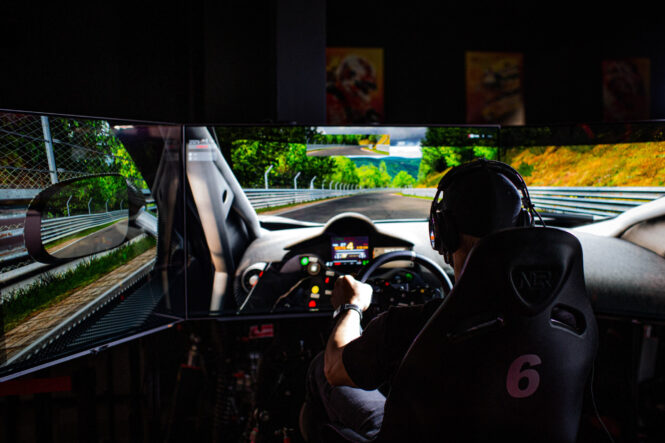
Real-life competitions are taxing on the human body. The forces exerted during cornering, braking, and acceleration are felt strongly. Drivers endure high G-forces that lead to physical strain. A professional driver needs high fitness levels to remain sharp and focused throughout a race.
In a sim setup, none of these physical forces affect the driver. The only physical effort involves operating pedals and steering with force feedback. While fatigue can set in after hours behind the screen, the body is not subjected to the same intense physical conditions found on a real track.
This difference makes the actual sport more demanding from a fitness perspective. In contrast, virtual setups allow players to focus entirely on their racing line, gear shifts, and reactions.
This is where learning to improve in iRacing can be beneficial, especially when trying to master dynamic conditions. For those wanting to enhance their skills in changing environments, online courses offer valuable knowledge.
2. Costs and Expenses
Real-life competition comes with enormous financial demands. A vehicle needs maintenance, fuel, tires, and entry fees. Damage to the car means repairs, which could lead to high expenses. Teams often consist of several crew members, engineers, and mechanics, all requiring compensation for their work.
Sim-based racing eliminates most of these costs. A good setup consists of a wheel, pedals, and a gaming PC or console. While high-end gear and software like iRacing can become expensive, it’s still far cheaper than owning and maintaining a real car.
Simulators provide an affordable alternative, allowing individuals to race in highly accurate virtual environments without worrying about the financial consequences of crashing.
3. Environmental Factors
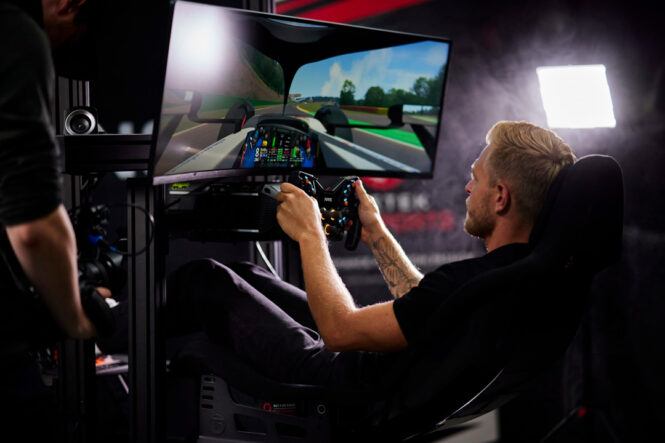
Weather plays a huge role in real racing. Rain, heat, wind, and humidity all affect the car’s performance. Drivers must adapt to changes in grip, temperature, and visibility. A wet track demands a completely different approach from a dry one, requiring different tire strategies and car setups.
Sim environments offer dynamic weather conditions. However, drivers do not physically experience the effects of rain or heat. While the software can simulate these conditions visually, there is no real-life discomfort associated with them. Adjustments are more strategic than physical, allowing players to focus on improving their virtual performance.
4. Safety Considerations
Safety is a top concern in real-world motorsport. Drivers wear helmets, fireproof suits, and other gear designed to protect them. Tracks are designed with barriers, gravel traps, and runoff areas to minimize the risk of accidents. Despite precautions, injuries can still happen, and the danger adds a significant mental challenge for the competitors.
In a virtual environment, no personal danger exists. Sim racers can take more risks without the fear of physical injury or the consequences of a crash. While this allows for more aggressive maneuvers, it also removes the stress and mental toll that come with real-world consequences.
Simulators provide a safe platform to practice skills and explore the limits of driving. However, it lacks the psychological challenge that drivers face in a real-life setting where mistakes can lead to injury or even death.
5. Equipment and Setup
In real-life, cars have highly specialized parts. The materials, design, and components are specifically tailored to meet the demands of a given circuit. Drivers work closely with engineers to optimize performance, adjusting everything from tire pressure to suspension stiffness.
Sim rigs also offer customization, with various brands and manufacturers providing different types of wheels, pedals, and cockpits. Force feedback replicates the sensations of steering, but the feel will never match a real car’s response. A professional-grade sim setup can mimic real driving to some extent, but it will always fall short of the full tactile experience of handling an actual vehicle.
Both environments require investment in good equipment, but the costs and technical demands differ greatly. Real setups involve intricate mechanical and engineering work, while virtual rigs focus more on digital feedback and immersion.
6. Transfer of Skills
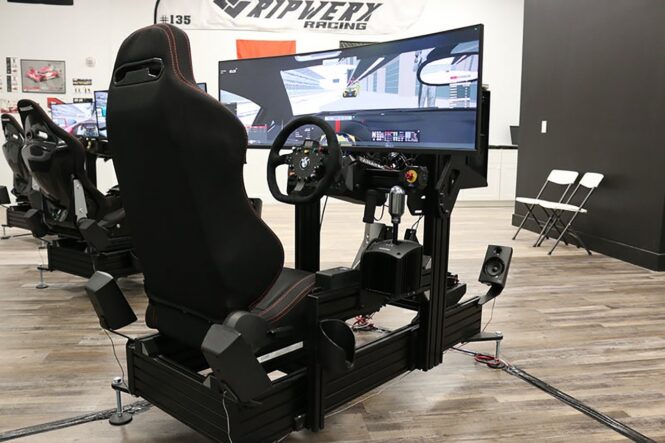
Driving in a sim allows users to develop some transferable skills. Car control, understanding racing lines, and mastering braking points can benefit real drivers. Many professionals practice on simulators to familiarize themselves with tracks before heading to real races.
However, not all skills transfer seamlessly. In real life, drivers face additional variables like tire wear, engine performance, and environmental changes that are difficult to replicate fully in a sim. Techniques such as throttle control and gear shifting translate well, but handling the physical forces and adapting to real-world unpredictability are skills that come from real-life seat time.
Simulators can improve reaction time, hand-eye coordination, and overall awareness, but there are limitations to how much can be gained without real-world practice.
7. Feedback and Sensations
Real-life competition provides drivers with physical feedback. G-forces push them back into their seats, tires squeal on the tarmac, and the car vibrates over curbs. These sensations help the driver make split-second decisions. The body communicates critical information that influences how the driver reacts.
Sim experiences rely heavily on visual and auditory cues. Force feedback wheels offer resistance, but they do not provide the same level of information as a real car. Sound plays a crucial role in helping a sim racer know when to shift gears, but it lacks the depth and variety of real-world noises, such as engine vibration and tire squeal.
The lack of physical feedback in virtual experiences limits the ability to fully replicate the sensations felt by real drivers. Real motorsport offers a multi-sensory experience that no simulator can replicate.
8. Mental Challenges
Real-world competitions are mentally demanding. Drivers must maintain focus under immense pressure, often for hours. The combination of physical fatigue and high-stakes decision-making creates mental strain. Keeping concentration through laps of near-identical repetition can be exhausting, especially with external factors like weather or mechanical issues adding to the complexity.
Sim competitions also require strong mental focus. Long races can become mentally draining, with players needing to stay sharp to avoid mistakes. However, without the physical demands and external pressures of real competition, the mental fatigue is less intense.
Simulators offer mental challenges, but they do not compare to the psychological stress faced in real-world motorsport, where one wrong move could lead to serious consequences.
9. Track Knowledge and Familiarization
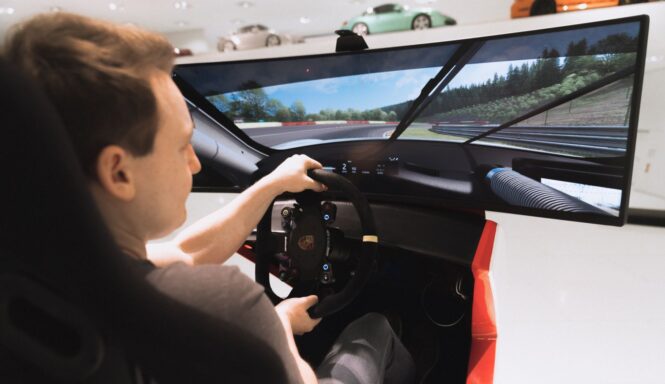
In real-life motorsport, drivers need to learn and adapt to each track. Elevation changes, surface types, and the layout of the circuit play a huge role in how they perform. Drivers rely on practice sessions and experience to memorize the intricacies of each course.
Simulators allow players to learn tracks in a more controlled environment. Some platforms offer laser-scanned circuits that are nearly identical to their real-world counterparts. Players can repeat laps on any track as many times as needed, learning every corner without the time or financial constraints of real practice sessions.
Sim-based practice helps familiarize drivers with layouts, but real-life nuances like track temperature or tire degradation are hard to simulate fully.
10. Emotional Impact
Real competition brings an emotional high that virtual experiences cannot match. The feeling of victory or the disappointment of failure in front of thousands of spectators carries a weight that is unique to real-life motorsport. The roar of the crowd, the physical exhaustion, and the adrenaline rush are all part of the experience.
While virtual competitions can still bring excitement, they lack the emotional depth of real events. The stakes are lower, and the risk of failure does not carry the same emotional impact.
Racing in a sim provides entertainment and can be rewarding, but the real-world highs and lows of competition are far more intense and memorable.
 Imagup General Magazine 2024
Imagup General Magazine 2024
